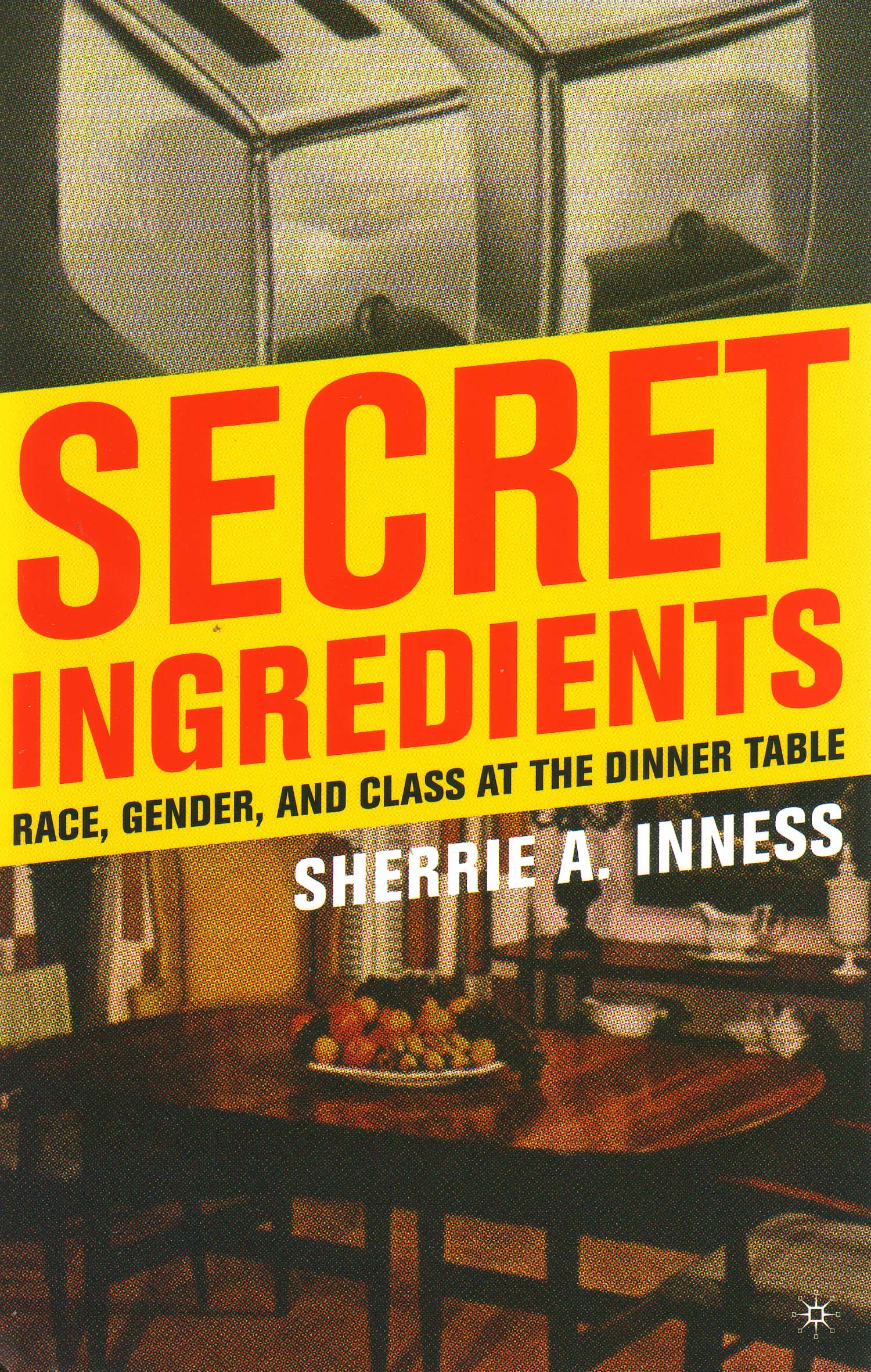Secret Ingredientsby: Sherrie A. Inness
New York NY:
Palgrave Macmillan 2006, Hardbound
Reviewed by: Jacqueline M. Newman
Winter Volume: 2006 Issue: 13(4) page(s): 29
 How women use recipes and cook to challenge the status quo is the focus of this book. Chapter three explores Chinese cook books indicating how the author sees societal and social norms of their authors circa the 1950's. The chapter title, Unnatural, Unclean, and Filthy: Chinese-American Cooking Literature Confronting Racism in the 1950's tells her point of view; she does find quotes to substantiate it. How women use recipes and cook to challenge the status quo is the focus of this book. Chapter three explores Chinese cook books indicating how the author sees societal and social norms of their authors circa the 1950's. The chapter title, Unnatural, Unclean, and Filthy: Chinese-American Cooking Literature Confronting Racism in the 1950's tells her point of view; she does find quotes to substantiate it.
The focus on anti-Chinese attitudes of times when rampant racism was operational is how she discusses and gives reasons why the image of the Chinese has changed and the role their cookbooks played in so doing. Inness points out that Chinese authors focused on ancestral recipes and not on volatile issues nor communism. She feels they wrote about tame foods to gain acceptance for all Chinese and their cultural cuisine. She notes that not all Chinese cookbooks provided only tame recipes, that some did venture beyond egg rolls and egg fu yung. Inness indicates those she feels include authentic recipes and asks if Americans were ready for fish bladders or dried squid? She says the cookbooks written were trying to teach people, including Anglo-Americans, about authentic Chinese food presenting what the authors felt they would accept. The book offers interesting political perspectives, especially for those who believe that Chinese immigrants wrote with these thoughts in mind, or that they thought about what their books might say to liberal or conservative politicos. What the Chinese cook book authors thought they were saying beyond including recipes in books that would sell is not addressed; nor were any still living interviewed. That might show different perspectives. The Chinese authors among those quoted that we knew had need to make them successful; many told us over time, their editors influenced recipe inclusions. The introductory chapter does advise the book's point of view as it is called: Introduction: Recipes for Revolution. Other chapter titles and content do likewise. The last two are titled: Dining on Grass and Shrubs: Making Vegan Food Sexy; and Thin is Not In: Two Fat Ladies and Gender Stereotypes on the Food Network. In all of them, Inness does an excellent job of defending her thesis. In the chapter about Chinese cookbooks, she mentions important Chinese cookbooks of the times, and for that alone, the book is a find. There are twenty-four pages of Works Cited; from them the reader can glean important cookbooks for their dinner table. I recommend the book to everyone studying popular cultural cook book literature, sources to do so are almost all there.
|

 How women use recipes and cook to challenge the status quo is the focus of this book. Chapter three explores Chinese cook books indicating how the author sees societal and social norms of their authors circa the 1950's. The chapter title, Unnatural, Unclean, and Filthy: Chinese-American Cooking Literature Confronting Racism in the 1950's tells her point of view; she does find quotes to substantiate it.
How women use recipes and cook to challenge the status quo is the focus of this book. Chapter three explores Chinese cook books indicating how the author sees societal and social norms of their authors circa the 1950's. The chapter title, Unnatural, Unclean, and Filthy: Chinese-American Cooking Literature Confronting Racism in the 1950's tells her point of view; she does find quotes to substantiate it.